Flaky Danger: Can Cats Eat Croissants Safely? Vet Explains the Buttery Risks
- 16 Apr 2025 10:44
The rich aroma of a warm, buttery croissant is a delight many humans enjoy. As you savor that flaky pastry, perhaps sharing a moment at a cafe or your kitchen table, you might notice your feline companion showing interest. Their sensitive noses might pick up the buttery scent, leading you, as a loving cat owner, to ponder: can cats eat croissants? They seem less overtly harmful than chocolate or onions, but are they truly a safe treat to share?
The clear answer, based on veterinary understanding of feline nutrition and metabolism, is a firm **NO**. Croissants, despite their simple appearance, are loaded with ingredients that are fundamentally unsuitable and potentially harmful for cats. As **obligate carnivores**, cats have highly specialized dietary needs that pastries like croissants simply cannot meet and can actively disrupt. This comprehensive guide, adhering to E-E-A-T principles (Experience, Expertise, Authoritativeness, Trustworthiness) and reviewed for veterinary accuracy, will explore the significant risks associated with feeding croissants to cats, detailing the dangers of high fat, carbohydrates, salt, and other potential ingredients, emphasizing why this human indulgence should be kept strictly away from your pet.

Deconstructing the Croissant: What's Inside This Pastry?
Understanding why croissants are unsuitable requires looking at their core components. A traditional croissant is made through a lamination process, layering dough with butter and repeatedly rolling and folding. Key ingredients typically include:
Refined Wheat Flour:** The primary structural ingredient, providing a high load of carbohydrates.
Butter:** Used in large quantities for lamination, contributing significantly to the high fat content and characteristic flaky texture.
Water and/or Milk:** Liquid used in the dough. Milk introduces lactose.
Yeast:** For leavening.
Sugar:** Often added in small amounts for flavor and to feed the yeast.
Salt:** Essential for flavor balance and dough structure.
Egg Wash (Sometimes):** Applied for a golden finish.
Variations like chocolate croissants (pain au chocolat), almond croissants, or ham and cheese croissants introduce additional ingredients, many of which carry their own specific risks for cats (chocolate, nuts, high-sodium processed meats, potentially onion/garlic).
From a cat's perspective, this ingredient list is problematic, dominated by high levels of **fat** (primarily butter) and **carbohydrates** (refined flour).
Feline Nutrition vs. Pastries: A Biological Mismatch
Cats operate under a completely different nutritional paradigm than humans or omnivores. As **obligate carnivores**, their bodies are designed for and require:
High Animal Protein Diet:** Essential for energy, muscle mass, enzyme function, and providing vital amino acids like taurine (crucial for heart and eye health) that they cannot synthesize sufficiently.
Animal Fats:** A key energy source and provider of essential fatty acids like arachidonic acid, which cats cannot effectively derive from plant sources.
Minimal Carbohydrates:** They have no dietary requirement for carbohydrates and possess limited enzymatic capacity (lacking salivary amylase, reduced pancreatic amylase) to efficiently digest starches like flour. Carbs offer mainly empty calories.
Specific Vitamin Needs:** Require pre-formed Vitamin A (retinol) from animal sources, unlike humans who can convert beta-carotene.
Lactose Intolerance:** Most adult cats lose the ability to produce sufficient lactase, the enzyme needed to digest lactose (milk sugar), making them prone to digestive upset from dairy products.
Croissants, with their flour base, high butter content (dairy fat and potentially lactose), salt, and lack of essential animal-derived nutrients, fundamentally clash with these biological requirements.
The Direct Answer: Why Cats Absolutely Should NOT Eat Croissants
Let's state it plainly: **Croissants are unsafe and unhealthy for cats.** Offering them even as a small treat is strongly discouraged due to numerous potential health hazards:
EXTREMELY High Fat Content:** Poses a significant risk of severe gastrointestinal upset and potentially fatal pancreatitis.
High Carbohydrate Load:** Difficult for cats to digest, leading to GI issues and providing empty calories.
Sodium (Salt) Content:** Can contribute to excessive salt intake, risky especially for cats with kidney or heart issues.
Dairy Content (Butter/Milk):** Likely to cause digestive upset due to lactose intolerance in most adult cats.
Lack of Nutritional Value:** Offers virtually nothing beneficial for a cat's obligate carnivore needs, displacing essential nutrients.
Potential for Toxic Ingredients:** Flavored croissants (chocolate, almond, raisin, savory types with onion/garlic) contain ingredients that are actively poisonous to cats.
Obesity Risk:** Extremely calorie-dense due to fat and carbs, contributing to weight gain.
There is simply no justification for feeding this high-fat, high-carb human pastry to a cat.
Deep Dive into the Dangers: Why Croissant Ingredients Harm Cats
Understanding the specific impact of the primary ingredients highlights the unsuitability of croissants:
1. Excessive Fat Content (Butter) - **CRITICAL DANGER**
The defining characteristic of a croissant is its high butter content, achieved through lamination.
Digestive Overload:** A cat's digestive system, while capable of handling animal fat, is easily overwhelmed by such a concentrated dose. This often leads to immediate **vomiting, diarrhea (often greasy - steatorrhea), and severe abdominal pain.**
Acute Pancreatitis Trigger:** This is the most serious risk associated with high-fat foods like croissants. Pancreatitis is a severe, painful, and potentially life-threatening inflammation of the pancreas. A sudden influx of high fat is a primary trigger. Symptoms include persistent vomiting, extreme lethargy, dehydration, fever, and intense abdominal pain (often causing a hunched posture). **Pancreatitis requires immediate, intensive veterinary care.** It is impossible to know how much fat will trigger pancreatitis in an individual cat, making *any* high-fat treat a dangerous gamble.
The sheer amount of butter makes **croissants dangerous for cats** primarily due to the pancreatitis risk.
2. High Carbohydrates (Refined Flour)
The flour base provides a large dose of carbohydrates cats don't need and can't handle well.
Poor Digestion:** Lack of efficient starch-digesting enzymes leads to fermentation in the gut.
Symptoms:** Gas, bloating, abdominal discomfort, diarrhea.
Empty Calories:** Provides energy without the essential amino acids, fatty acids, vitamins, and minerals cats require from meat. Contributes significantly to calorie intake without nutritional benefit.
Long-Term Risks:** Chronic consumption of high-carb foods contributes to obesity and increases the risk of feline diabetes mellitus.
3. Sodium (Salt) Content
Salt is necessary for the dough's structure and flavor.
Feline Sensitivity:** Cats require much less sodium than humans and are more sensitive to excess.
Health Risks:** While the amount in a plain croissant might not cause acute salt toxicity unless a huge amount is eaten (unlikely), it still contributes unnecessary sodium. This is particularly risky for cats with underlying kidney disease, heart conditions, or hypertension. Savory croissants with added salt are even more dangerous.
4. Dairy Content (Butter, Milk) & Lactose Intolerance
Butter and any milk used in the dough contain dairy fat and lactose.
Lactose Issue:** Most adult cats lack sufficient lactase to digest lactose properly.
Symptoms:** Leads to gas, bloating, abdominal cramps, and diarrhea.
Fat Issue:** The high dairy fat (butter) contributes significantly to the overall fat load, exacerbating GI upset and pancreatitis risks.
5. Sugar Content
While often minimal in plain croissants, any added sugar is detrimental.
Unnecessary:** Cats don't taste sweetness and have no need for sugar.
Health Risks:** Contributes empty calories, potential weight gain, dental issues, and diabetes risk.
6. **TOXIC ADDITIVES** in Flavored Croissants - **EMERGENCY RISKS**
Croissants filled or topped with other ingredients pose extreme dangers:
Chocolate Croissants:** Chocolate contains theobromine and caffeine, highly toxic to cats, causing severe neurological and cardiac signs (vomiting, diarrhea, hyperactivity, tremors, seizures, abnormal heart rhythm, potentially death).
Almond Croissants:** While almonds themselves aren't acutely toxic like chocolate, almond paste often contains high sugar, fat, and potentially traces of bitter almond (cyanide precursor, though risk is usually low in processed paste). The high fat/sugar alone is problematic.
Raisin Pastries:** Grapes and raisins are extremely toxic to cats, causing acute kidney failure.
Savory Croissants (Ham & Cheese, Spinach & Feta, etc.):** Extremely risky. Often contain **toxic onion or garlic**, high salt levels (processed meats, cheese), excessive fat, and lactose (cheese).
**Xylitol:** Be cautious of any "sugar-free" pastries, as they might contain the deadly artificial sweetener xylitol.
Never feed any flavored or filled croissant to a cat.
7. Lack of Essential Nutrients
Croissants provide none of the critical nutrients an obligate carnivore needs – no taurine, insufficient essential amino acids, wrong types of fats, no pre-formed Vitamin A. Feeding them displaces vital nutrition from their actual food.
"My Cat Ate a Croissant!" - What To Do: Action Plan
Accidental ingestion requires immediate assessment:
1. Identify Type & Amount:** Was it plain or flavored (chocolate, almond, raisin, savory)? How much was eaten (a tiny crumb vs. a significant piece)? Note the time.2. CHECK INGREDIENTS (Flavored):** If flavored, immediately try to determine if it contained **chocolate, raisins, xylitol, onion, or garlic.**3. Prevent Further Access:** Secure any remaining croissant pieces.4. Contact Your Veterinarian or Emergency Pet Clinic:**
* **If TOXIC Ingredients Suspected (Chocolate, Raisins, Xylitol, Onion, Garlic):** **IMMEDIATE VETERINARY EMERGENCY.** Call right away, regardless of amount eaten. These require urgent treatment.
* **If Plain Croissant (Significant Amount Eaten):** Call your vet immediately due to the high risk of **pancreatitis** and severe GI upset.
* **If Plain Croissant (Tiny Crumb):** Call your vet for advice. Monitor closely for vomiting, diarrhea, lethargy, or abdominal pain. Even a small amount could trigger issues in sensitive cats.
5. Do NOT Induce Vomiting:** Unless explicitly instructed by a veterinarian.
6. Follow Veterinary Guidance:** Treatment will vary based on the situation, ranging from monitoring to emergency care for toxicity or pancreatitis (IV fluids, pain meds, anti-nausea meds, hospitalization). Prompt action is crucial, especially if toxic ingredients or large amounts of fat were ingested. Watch for these symptoms: GI Upset (Fat/Carbs/Lactose):** Vomiting, diarrhea (possibly greasy), gas, abdominal discomfort, loss of appetite. Pancreatitis:** Persistent vomiting, severe lethargy, extreme abdominal pain (hunched posture), fever, dehydration, collapse. (**Emergency**) Chocolate Toxicity:** Vomiting, diarrhea, hyperactivity, restlessness, tremors, seizures, rapid/abnormal heart rate. (**Emergency**) Raisin Toxicity:** Vomiting, diarrhea, lethargy, loss of appetite, increased thirst/urination (signs of kidney failure). (**Emergency**) Xylitol Toxicity:** Vomiting, weakness, lethargy, collapse, tremors, seizures (hypoglycemia). (**Emergency**) Onion/Garlic Toxicity:** Lethargy, weakness, pale gums, rapid breathing (anemia - may be delayed). (**Emergency**) Salt Toxicity:** Excessive thirst/urination, vomiting, diarrhea, neurological signs (tremors, seizures). (**Emergency**) Show your love with treats that align with your cat's health needs: Plain Cooked Meat:** Small pieces of unseasoned chicken, turkey, lean beef, lamb. Commercial Cat Treats:** High-quality, meat-first, low-calorie options. Freeze-Dried Meat:** Single-ingredient protein treats. Lickable Treats / Meat Pastes:** Fun and engaging. Dental Treats for Cats:** Functional treats. A Small Amount of Plain Cooked Fish:** (e.g., salmon, tuna in water - limit due to mercury/thiaminase potential if raw). These are infinitely safer and more appropriate than **cats eating croissants**. Veterinarians and veterinary nutritionists consistently advise against feeding croissants to cats. The main reasons cited are: **Extremely high fat content**, posing a major risk for severe GI upset and potentially fatal pancreatitis. **High carbohydrate content**, which is indigestible and nutritionally inappropriate for obligate carnivores. Potential for **toxic ingredients** (chocolate, raisins, xylitol, onion, garlic) in flavored varieties. **High sodium and sugar content** in many recipes. Overall **lack of nutritional value** and contribution to obesity. The professional verdict is clear: croissants offer only risks and no benefits for feline health. Knowing which human foods pose serious threats, like the dangers hidden in a seemingly innocent croissant, is crucial for protecting your cat. Accidental ingestion of harmful foods can be frightening, and quick access to reliable information is vital while you contact your veterinarian – your essential partner in diagnosis and treatment. The PettureX App provides helpful features for concerned pet parents: 24/7 AI Vet Consultation: Get immediate AI-powered answers to urgent questions ("My cat ate a chocolate croissant! What do I do?") or guidance on symptoms like persistent vomiting or extreme lethargy, helping assess urgency. Image Recognition Technology: Useful for breed identification or getting preliminary insights into visible health issues. AI-Powered Symptom Checker: Input your cat's symptoms for an AI analysis of potential causes, including pancreatitis or poisoning from toxic ingredients, facilitating effective communication with your vet. Comprehensive Pet Health Database: Quickly access information on toxic foods, common feline emergencies, first aid awareness, and nutritional guidelines. PettureX serves as a valuable digital assistant, offering convenient AI-driven support and information designed to complement the critical, personalized care provided by your veterinarian, especially in urgent situations. In conclusion, the answer to "can cats eat croissants?" is a definitive and emphatic **NO**. These buttery, flaky pastries are laden with ingredients that are fundamentally unhealthy and potentially dangerous for cats. The extremely high fat content poses a severe risk of gastrointestinal upset and life-threatening pancreatitis. The high carbohydrate load is indigestible and contributes empty calories. Added salt, sugar, and dairy further compound the unsuitability. Critically, flavored croissants often contain ingredients like chocolate, raisins, xylitol, onion, or garlic, which are actively poisonous to cats and can cause veterinary emergencies. Even plain croissants are too risky due to their core composition. Protect your feline friend's health by keeping croissants and all similar human pastries securely out of their reach. Choose safe, healthy, species-appropriate treats to show your affection. When it comes to croissants, the flaky layers hide layers of danger for cats.Signs of Trouble After Croissant Ingestion
Skip the Pastries: Offer These Safe & Healthy Cat Treats
Veterinary Consensus: Croissants are a Firm "Non" for Felines
Summary Table: Cats and Croissant Safety
Aspect Safety Information & Recommendations Can Cats Eat Croissants? **NO.** Unsafe due to high fat, carbs, salt, potential toxins. Avoid completely. Primary Dangers **High Fat** (Pancreatitis Risk!), **Toxic Ingredients** (Chocolate, Raisins, Xylitol, Onion/Garlic), High Carbs (GI Upset). Harmful Ingredients Butter, Flour, Salt, Sugar, Milk (Lactose), plus potential toxins in fillings/toppings. Nutritional Value for Cats None. Empty calories, lacks essential nutrients, contains harmful substances. Plain Croissants Still unsafe due to high fat (pancreatitis risk) and high carbs (GI upset). Flavored Croissants **EXTREMELY DANGEROUS.** High likelihood of containing ingredients toxic to cats. Action if Eaten Identify type/amount. **Toxic ingredients -> IMMEDIATE VET/EMERGENCY.** Large amount plain -> Call Vet (pancreatitis risk). Tiny plain crumb -> Call vet for advice, monitor. Symptoms of Trouble Vomiting (persistent), diarrhea (greasy), abdominal pain, lethargy, collapse (Pancreatitis); specific signs for toxins (seizures, pale gums, etc.). Recommendation **Strictly AVOID** feeding croissants. Keep human pastries secure. Offer safe, species-appropriate treats. Facing Pet Health Emergencies or Dietary Questions? PettureX Offers Support!
Conclusion: Croissants - Delicious for Us, Dangerous for Cats
Related

Frankly Dangerous: Can Cats Eat Hot Dogs? Vet Explains the Serious Risks
- 16 Apr 2025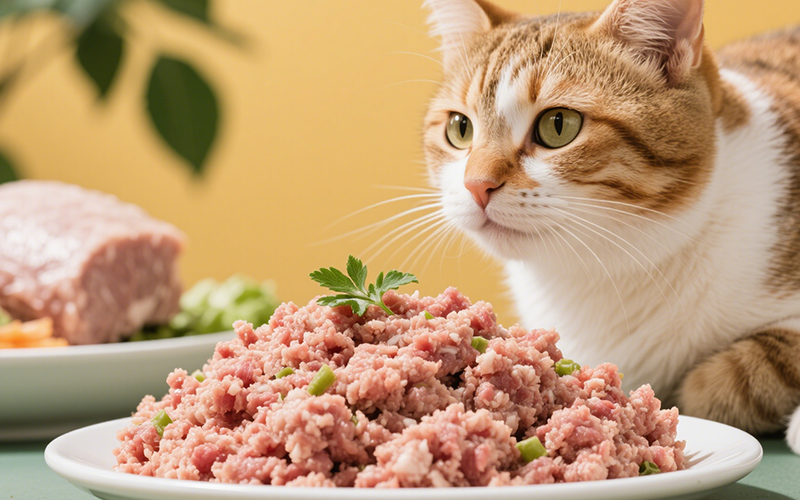
A Purrfect Protein? Can Cats Eat Ground Turkey Safely? (Vet-Reviewed Guide)
- 16 Apr 2025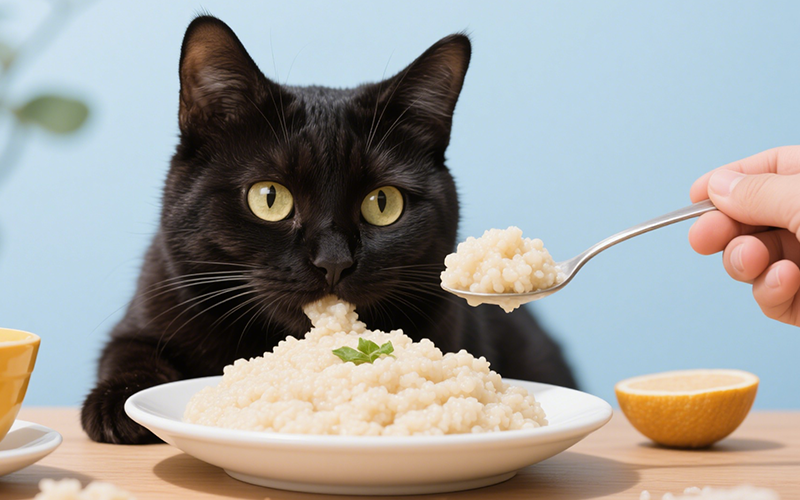
Gritty Situation: Can Cats Eat Grits Safely? Vet Explains the Risks
- 16 Apr 2025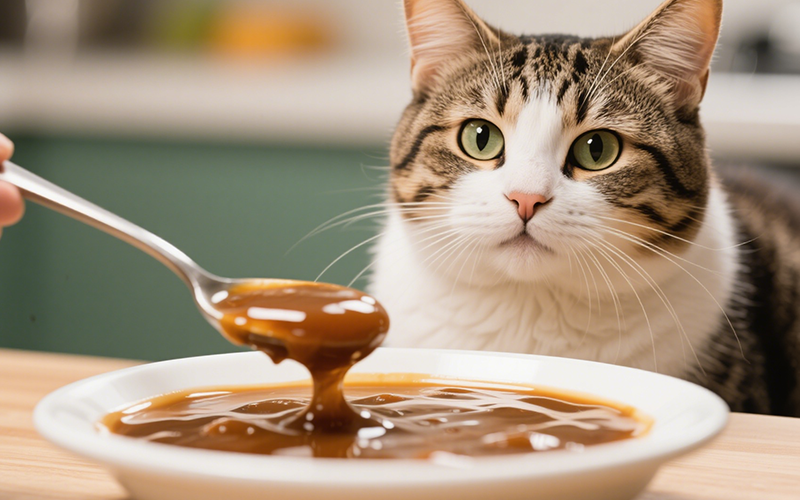
Gravy Danger Zone: Can Cats Eat Gravy Safely? (Vet-Reviewed Warning)
- 16 Apr 2025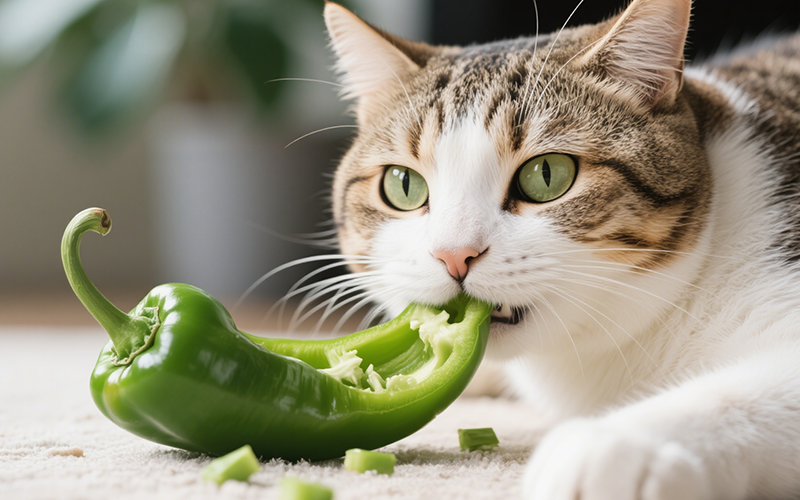
Crunchy Query: Can Cats Eat Green Peppers? A Vet-Reviewed Safety Analysis
- 16 Apr 2025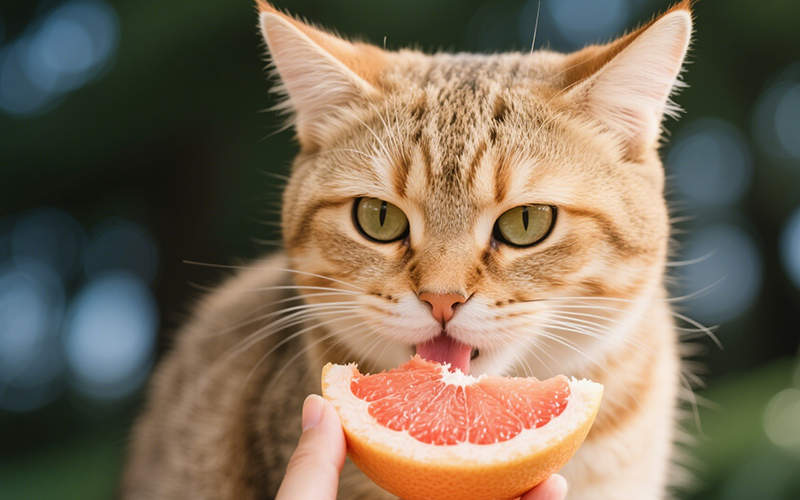
Toxic Temptation: Can Cats Eat Grapefruit? Vet Explains the Dangers
- 16 Apr 2025
Emergency Meal or Major Mistake? Can Cats Eat Dog Food For A Couple Days? (Vet Guide)
- 16 Apr 2025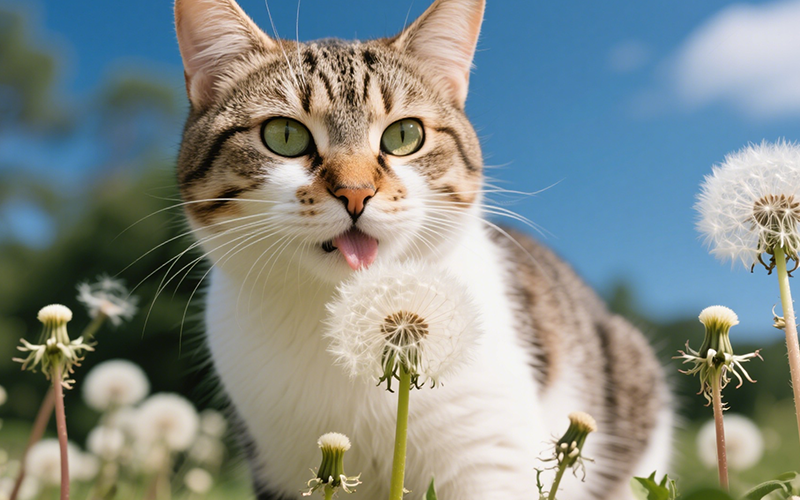
Dandelions & Felines: Can Cats Eat These Common Weeds Safely? Vet Explains
- 16 Apr 2025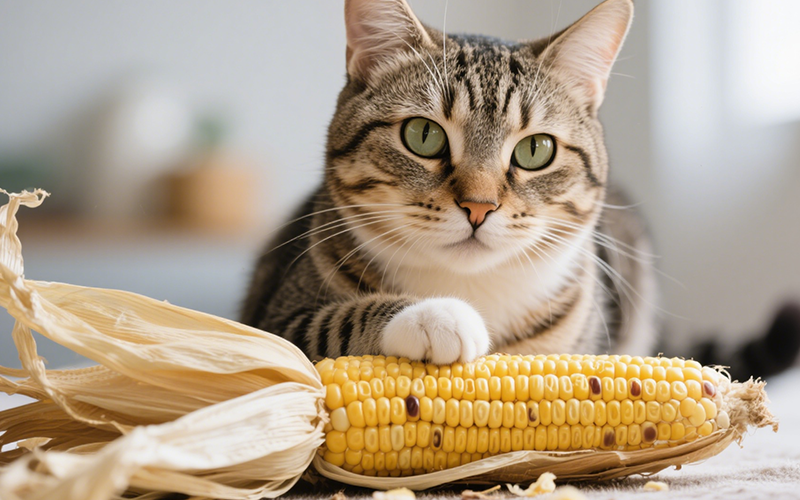
Hazard Alert: Can Cats Eat Corn Husks? Vet Explains Dangers of This Fibrous Material
- 16 Apr 2025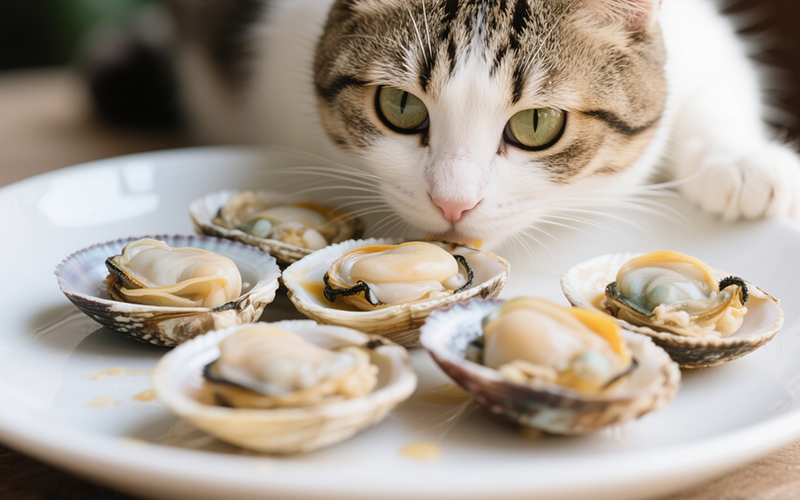
Seafood Surprise: Can Cats Eat Clams Safely? (Vet-Reviewed Risks & Guide)
- 15 Apr 2025
